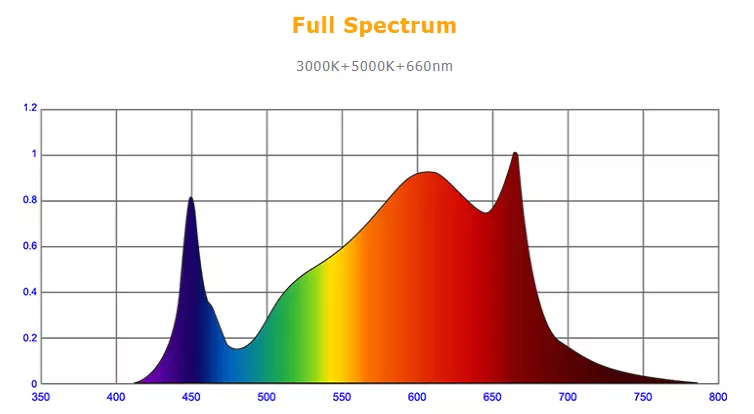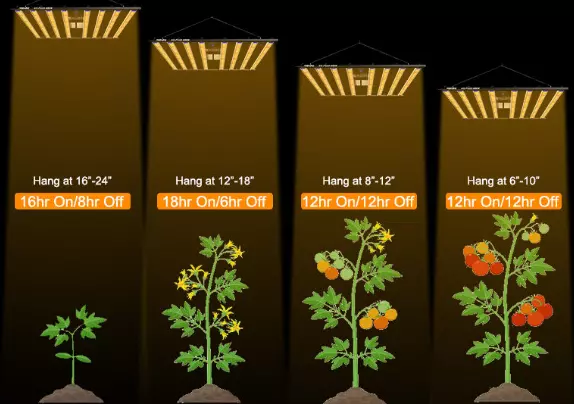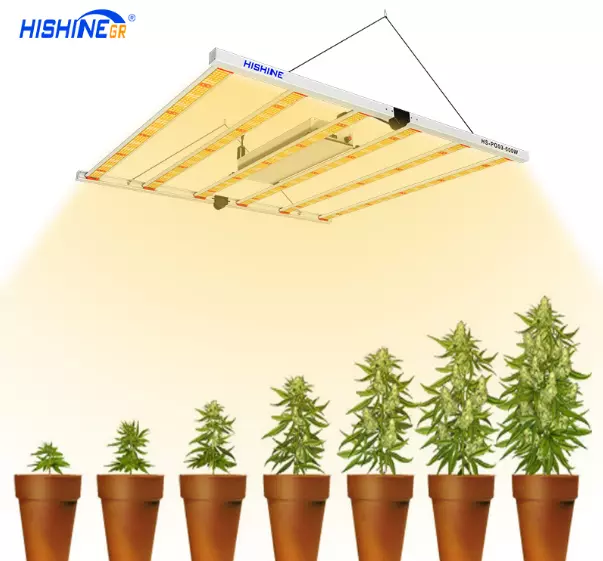There are several main quality considerations when using plant growth lights: the color of the light, the daily light interval, and the light intensity.
1.Light color
We all know that plants use light to grow-but have you ever wondered how the color of light affects the growth of plants?
The sun's emission spectrum is divided into two parts: visible light and invisible light. Today, we will mainly explain that visible light mainly includes 7 colors of red, orange, yellow, green, cyan, blue, and purple. When concentrated, it is white light.
Speaking of artificial light, most indoor plants thrive under full-spectrum light bulbs. The main thing is that Full Spectrum LED Grow Light mimics most of the sunlight, making plants think they are growing under bright sunlight. The principle is the wavelength produced by the LED light source. As a spectrum, there are a series of wavelengths that are most interesting for plant growth, including ultraviolet radiation and far-red radiation.

2.Daily light interval
As plants grow and mature, how much light they need will change. Younger plants need more light to last longer, while mature plants can use less light-but they need more intense light. At this time, it is very necessary to connect with other growing lamps for remote dimming control. It can also reduce the frequent adjustments of plants in the growth cycle.
This is where Full Spectrum LED Grow Light will benefit. Full Spectrum LED Grow Light is closer to simulating the sun, they include all the colors of the spectrum. If you grow hemp plants, hemp plants in the seedling stage need more blue light, and flowering hemp plants need more red light.

3.brightness
How to measure the light intensity displayed by the growth lamp?
All green plants need light to grow (otherwise they cannot perform photosynthesis) and the light intensity required for their growth cycle will vary with the growth cycle.
This requires Full Spectrum LED Grow Light to have dimmable (25%-50%-75%-100%), which changes according to the plant growth cycle.
For example, in the early stage of seedlings, they need a lot of light, but when they don't receive enough light intensity, they become small and elongated. But how do we measure the amount of light provided to plants?

By measuring the amount of light falling on the surface of plants, we can assess whether there is enough light for indoor plants to achieve maximum productivity. Measuring the intensity of light falling on a specific working surface simply requires a photometer with a sensor and a measurable illuminance reading.
Author 2025-06-12
Hishine Group Limited Will Meet Customers In Mexico City.Hishine is thrilled to announce its participation in Expo Eléctrica International 2025, Latin America’s premier trade fair for power and lighti...
Author 2025-05-12
Our recent business trip to Saudi Arabia proved to be a pivotal step in strengthening partnerships and exploring opportunities in the Kingdom’s rapidly growing energy and lighting markets. Below are t...